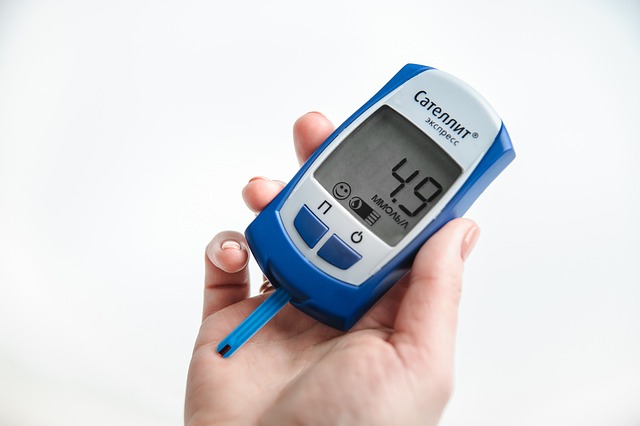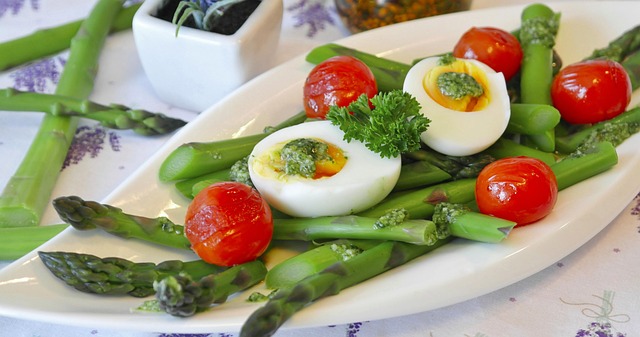If you have prediabetes or are concerned about a high risk for diabetes, it may be time to lose a few pounds or eat healthier. Still, it is not a good idea to follow an extreme diet, such as eliminating all carbs or vowing to avoid dessert for eternity.
Here is why moderation is key for diabetes prevention, how to follow a moderate diet, and what it means to take small serving sizes. With a few simple changes, it is possible to lower risk for diabetes by over 50% if you have prediabetes and are overweight.
The Merits of Moderation
Why should you go with a moderate approach when you have an enemy like diabetes to prevent? Wouldn't a full-on attack be better? Why not go gluten-free, keto, dairy-free, and vegan? Because it won't work.
- Scientific research doesn't prove, or even suggest, that these are good long-term approaches to preventing diabetes.
- Following extreme plans may be difficult or impossible to sustain for the long term as cravings start to hit or real-life situations, such as restaurant meals or parties, occur.
- It can be stressful to avoid favorite foods and worry about what you will be eating at which events, and that can be counterproductive when it comes to health.
- It can be easier to eat "well" most of the time when you know that there is a break coming up, say, a cheat meal, lunch with a friend, or a holiday that includes treats.
Instead, following a moderate diet, can be easier to maintain and less stressful. It can be mostly healthy, but include special treats and fun occasions such as birthday parties and nights out.
Superheroes for Preventing Diabetes
A diet to prevent diabetes is based on nutritious foods that have been linked to lower blood sugar, healthier body weight, lower risk for diabetes, or other health benefits. These are a few of those foods [1, 2, 3, 4, 5, 6].
- Vegetables: in salads, raw as snacks, or cooked as sides or into recipes, vegetables can make up half your plate at most meals.
- Fruits: fresh or unsweetened frozen fruit makes a good dessert or snack.
- Whole grains: high in fiber, whole grains include oatmeal, whole-wheat bread and pasta, brown rice, and whole-grain cereal.
- Olive oil: olive oil has heart-healthy properties when you use it instead of butter or most other fats when cooking and in salad dressings. Avocados also have heart-healthy fats.
- Nuts and peanuts: for snacks, in cereal and yogurt, and in nut and peanut butter, nuts and peanuts are high-calorie but have fiber and protein.
- Dairy: low-fat yogurt, cheese, and milk appear to have benefits for bones, weight loss, and heart health.
Treats in Moderation
Everyone needs treats sometimes. When you have a serious craving for a treat that you know is not the most nutritious, ask yourself if you really need that food. If you do, here are two ways to make it fit better into a healthy meal plan.
- Make it healthier: such as by adding vegetables to a sandwich or sauce, or by choosing a whole-grain version instead.
- Make it smaller: such as by serving yourself less, ordering a smaller size, or ordering full size and putting away half for later.
If making it smaller leaves you hungry, you can always add low-calorie vegetables or fruit, or lean protein, to make it bigger and more filling without adding many calories.
What Is a Small Serving Size?
Portion sizes are important for managing weight and preventing diabetes. Even healthy foods should be kept to moderation, since too much can lead to unwanted weight gain and higher blood sugar. (Still, it is nearly always okay to have more plain, raw vegetables because they are so low in calories!)
Measuring food portions is the most accurate way to know how much you are eating, but that can be inconvenient. Instead, "eyeballing," or estimating, the amount you are having can be useful. These are some sample serving sizes to keep in mind.
- A cup of lettuce or other vegetables or fruit is about the size of a baseball.
- A 3-oz. portion of chicken, ground turkey, or fish is about the size of a deck of cards or computer mouse.
- A 1-oz. portion of cereal is 1/4 cup of granola (2 golf balls), 3/4 cup of bran flakes (tennis ball), or 1 cup of Cheerios (baseball).
- A 1-oz. portion of bread is 1 thin slice of bread, 1/2 English muffin, or 1/4 bagel.
- A half-cup serving of cooked pasta or rice, beans, or cottage cheese is half the size of a tennis ball
- An ounce of cheese is the size of a thumb.
- An ounce of nuts is the size of the inside of a closed fist.
It is important to keep portion sizes of "less-healthy" foods in check, too, even if eating them feels like a guilty pleasure. Keeping them in moderation can help you prevent a small treat from becoming a diet-derailing regret.
These are examples of some smaller (and more reasonable) serving size, along with ideas for making your little treat more satisfying.
- Half a baseball-sized scoop of ice cream, plus raspberries
- A sticky note-sized piece of single-layer cake, plus strawberries
- A domino-sized piece of dark chocolate, melted over banana slices
- A tennis ball-sized handful of chips, plus a low-fat string cheese stick
- Checkbook-sized portion of steak and a tennis ball-sized portion of pureed cauliflower, plus a side salad.
Moderation can be the key to preventing diabetes for people who have prediabetes due to lifestyle factors. Lark Diabetes Prevention Program can help you avoid extreme diets and build healthy habits to lower risk for diabetes.
References
- Liu, Simin, Mary Serdula, Sok-Ja Janket, Nancy R. Cook, Howard D. Sesso, Walter C. Willett, Joann E. Manson, and Julie E. Buring. 2004. "A Prospective Study of Fruit and Vegetable Intake and the Risk of Type 2 Diabetes in Women." Diabetes Care 27 (12): 2993–96.
- Aune, Dagfinn, Teresa Norat, P√•l Romundstad, and Lars J. Vatten. 2013. "Whole Grain and Refined Grain Consumption and the Risk of Type 2 Diabetes: A Systematic Review and Dose-Response Meta-Analysis of Cohort Studies." European Journal of Epidemiology 28 (11): 845–58.
- Schwingshackl, L., A-M Lampousi, M. P. Portillo, D. Romaguera, G. Hoffmann, and H. Boeing. 2017. "Olive Oil in the Prevention and Management of Type 2 Diabetes Mellitus: A Systematic Review and Meta-Analysis of Cohort Studies and Intervention Trials." Nutrition & Diabetes 7 (4): e262.
- Fulgoni, Victor L., 3rd, Mark Dreher, and Adrienne J. Davenport. 2013. "Avocado Consumption Is Associated with Better Diet Quality and Nutrient Intake, and Lower Metabolic Syndrome Risk in US Adults: Results from the National Health and Nutrition Examination Survey (NHANES) 2001-2008." Nutrition Journal 12 (January): 1.
- Lovejoy, Jennifer C. 2005. "The Impact of Nuts on Diabetes and Diabetes Risk." Current Diabetes Reports 5 (5): 379–84.
- Gao, Dengfeng, Ning Ning, Congxia Wang, Yuhuan Wang, Qing Li, Zhe Meng, Yang Liu, and Qiang Li. 2013. "Dairy Products Consumption and Risk of Type 2 Diabetes: Systematic Review and Dose-Response Meta-Analysis." PloS One 8 (9): e73965.











.webp)






